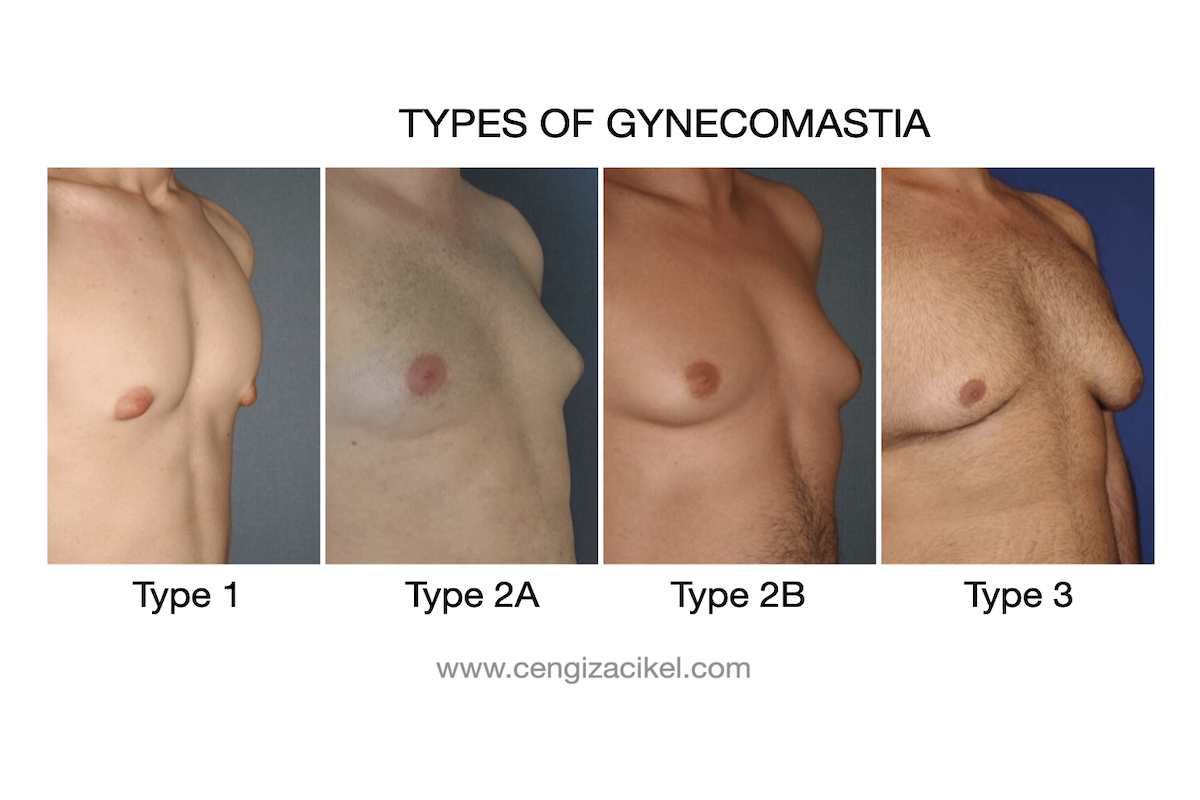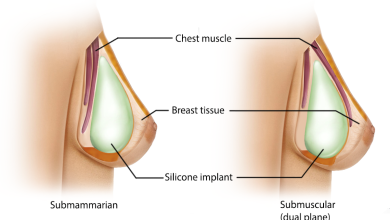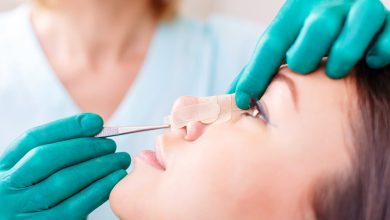Gynecomastia
What is Gynecomastia?
The question of “what is breast enlargement/gynecomastia in men” can be briefly answered as “the condition in which a male breast reaches larger sizes than normal due to various reasons”. In some cases, breast sizes can reach advanced degrees, causing a feminine appearance.
This condition which can be observed unilaterally or bilaterally has the potential to impair quality of life and cause serious psychosocial problems. Young men in particular stay away from activities such as swimming in the pool in public, avoid undressing among their friends, and tend to keep themselves in social isolation.
They cannot wear all clothes they want. They bend their shoulders forward to hide their enlarged breasts, and this may lead to permanent postural disorders.
Male breast reduction surgery, i.e. gynecomastia surgery, is one of the most common aesthetic surgery procedures performed on men today, and it gives extremely satisfactory and permanent results.
Incidence Rate of Gynecomastia
Increased breast tissue can be observed in men at different periods in their lives due to hormonal changes. The breast tissue in newborns that grows with the effect of the female hormone (estrogen) passing from the mother returns to normal in a few weeks. Different levels of breast enlargement are observed in 60 out of every 100 men in adolescence. After the end of adolescence, gynecomastia is observed in 7 out of every 100 men. With advancing age, an increase occurs in its incidence as a result of the drop in male hormone levels.
Gynecomastia is usually observed in both breasts. One side can be a bit larger than the other. Breast enlargement can be accompanied by pain and tenderness. In particular, unilateral enlargements that develop after the end of adolescence should be thoroughly investigated considering the possibility of an underlying disease such as breast tumor.
At What Age Is Gynecomastia Most Common In Men?
This condition which affects 35% of men is most prevalent between the ages of 50 and 69 due to the decrease in male hormone levels in the blood over the years. The periods in which breast enlargement is most common in men are the newborn period, adolescence, and the period after 50 years of age.
Causes Gynecomastia (Breast Enlargement in Men)
In 85% of surgically treated cases, no obvious cause of enlargement of the male breast can be identified, i.e. the disease is idiopathic. In 15%, there may be different factors causing the condition such as cancer, endocrine and metabolic diseases, stress, obesity, trauma, viral infections, use of certain drugs, or familial predisposition.
Breast enlargement in men can be observed only in one breast or both breasts at the same time; and in some cases, one breast can be more prominent than the other. An increase or decrease in hormone levels can be observed as a result of natural or environmental factors.
Natural Hormonal Changes
The proportions of hormones are different in men and women. Some hormones determine masculine characteristics such as larger muscle masses and body hair, while others determine feminine characteristics such as feminine breast development. The level of female sex hormone (estrogen) which is normally lower in men rises in some periods of life, causing an increased incidence of abnormal breast enlargement.
Gynecomastia in Newborns
More than 50% of male babies have breasts that are larger than normal due to the female hormones they receive from the mother. Swollen breast tissue usually subsides 2 to 3 weeks after birth.
Gynecomastia in Adolescence
Gynecomastia is a common problem in adolescence that usually regresses within 6 to 24 months without requiring special treatment.
Gynecomastia in Advanced Ages
Its incidence increases again in men over 50 years of age. In approximately 25% of this age group, breast enlargement is observed due to hormonal changes, that is, drops in the level of male sex hormone (testosterone).
Medications
- Anti-androgen drugs used to treat prostate enlargement or prostate cancer.
- Anabolic steroids and androgens.
- Diazepam-like drugs used in the treatment of anxiety.
- Tricyclic antidepressants.
- Antibiotics.
- Cimetidine-like drugs used in the treatment of ulcers.
- Chemotherapy drugs.
- Heart medications (such as calcium channel blockers).
- Drugs used to regulate bowel movements, such as metpamid.
- Some drugs used to treat AIDS.
Alcohol and Drugs
- Alcohol
- Amphetamine
- Marijuana
- Heroin
- Methadone
Health Conditions
Hypogonadism
In cases involving conditions that inhibit hormone production, such as Klinefelter’s syndrome or pituitary insufficiency, gynecomastia is observed.
Aging
Particularly in overweight people, the incidence of gynecomastia increases with aging.
Tumors
Some tumors, such as testicular tumors, adrenal gland, or pituitary gland tumors, disrupt the hormone balance.
Hyperthyroidism
It causes excessive production of thyroxine hormone.
Renal Failure
Breast enlargement due to hormonal changes is observed in approximately half of the patients receiving dialysis treatment.
Liver Failure and Cirrhosis
Men’s breasts may enlarge due to hormonal changes caused by liver problems and drugs used in the treatment of cirrhosis.
Malnutrition and Starvation
If the body is deprived of adequate nutritional support, hormone levels are disrupted and associated breast enlargement is observed.
Herbal Products
Vegetable oils such as tea tree or lavender, which are used in the production of shampoos, soaps, or lotions, can cause growth in the milk glands due to the mild female hormone they contain.
Types of Gynecomastia
Based on the structure of the growing tissue;
- Glandular Type: It is substantially the mammary glands that have enlarged.
- Fatty-Glandular Type: There is an increase in both the mammary glands and the adipose tissue between and around them.
- Fatty Type: There is a significant increase in the adipose tissue.
Another classification based on the size and skin condition of the breast:
Type 1: There is some hard breast tissue under the nipple, while the breast skin is normal.
Type 2A: The breast is moderately enlarged, while there is no excess skin.
Type 2B: The breast is moderately enlarged while there is some excess skin. The excess skin in this type of gynecomastia has the potential to return to normal spontaneously by shrinking after the surgery.
Type 3: The breast is large, similar to the female breast, and it is accompanied by excess skin. An additional surgical procedure is required for its removal.
What is Pseudogynecomastia?
Pseudogynecomastia, also known as Adipomastia or Fatty Breast, is a condition characterized by excessive accumulation of adipose tissue in the breast, and it is usually observed in obese males. Such people have localized fat deposits not only in their breasts but also in other parts of their bodies. In gynecomastia cases, some increase in the mammary glands is also observed.
When the excess tissue in the breast area is taken between the thumb and other fingers and touched, the enlarged milk glands feel like a rubbery mass in gynecomastia cases. In pseudogynecomastia cases, on the other hand, such a mass is not felt, and a more homogeneous, outspread soft tissue is felt by manual palpation. Breast ultrasonography detects only an increase in the adipose tissue.
The most effective procedure for the treatment of pseudogynecomastia is “liposuction”, i.e. vacuuming excess fat out of the breast with the help of a cannula.
Is Gynecomastia a Disease?
Gynecomastia is largely a benign (non-cancerous) condition. It is usually attributed to changes in the levels of male and female hormones in the blood due to various factors. In most cases, no specific cause that may cause gynecomastia is identified. In other words, not every gynecomastia case is necessarily a disease that requires treatment. However, gynecomastia (not pseudogynecomastia) may also be observed as a symptom of an underlying disease.
Therefore, any cases of breast enlargement should first be evaluated by an Endocrinology and Metabolic Diseases specialist. If no disease is found as a result of this evaluation, the case of breast enlargement can be considered an aesthetic problem. In such a case, surgery is not a must but some patients may want to gain a more normal appearance for psychological and social reasons.
What Are The Treatment Procedures For Gynecomastia?
In gynecomastia treatment priority should be directed to the root-cause. If the examinations have detected a condition such as an underlying disease, drug use, obesity, or trauma that causes gynecomastia, this condition should be treated first. For example, if a disease that disrupts the balance of hormones in men has been detected, this disease should be treated first.
If the patient is obese, the focus should be on weight loss before surgical treatment. Gynecomastia surgery is the only effective and permanent method for the treatment of gynecomastia of unknown cause seen in adult patients.
What Is Gynecomastia Surgery
Gynecomastia surgery is not a single surgical procedure. Many factors are taken into account when deciding on the surgical technique to be used, including the amount of increase in breast tissue, the amount and rate of fat accumulation in the breast, and the looseness and sagging of the breast skin. The most common surgical procedures performed to treat gynecomastia:
1- Liposuction (Fat Suction) Alone
The excess fat in and around the breast tissue is vacuumed out by accessing through a 4 mm incision made from the armpit line, and no incision is made on the nipple. The procedure takes about 1 hour on average. It does not involve drain placement. At the end of the operation, a compressive bandage is applied to the area and a special corset is put on the patient.
2- Surgical Removal of the Tissues through an Incision Made on the Breast Skin
- Entering through a semi-circular incision on the lower half of the nipple, only the breast tissue is removed, without removing any part of skin.
- Through different incisions, a part of breast skin is removed together with excess breast and fat tissue. The surgery may leave a circular scar only around the nipple, but in more advanced cases with too much excess and saggy breast skin, permanent scars are created on the sides or lower portions of the breast in addition to the ones in the nipple area to remove the excess skin.
In cases where the enlargement of the hard breast tissue is restricted to the nipple area, the excess breast tissue (not the entire breast tissue!) is removed through a semicircular incision made from the lower half of the nipple. The method to be used in more advanced cases may differ depending on the experience and preference of the surgeon.
Liposuction or surgical technique can be used separately, in conjunction with each other, or in two stages, with the first being liposuction and the second being surgical excision.
Experience is essential for the ability to adjust the appropriate amount of tissue to be removed during surgery and the amount of tissue to be left for a natural-looking breast and nipple requires. When more than necessary tissue is removed, the breast takes on an unnaturally sunken appearance; and in addition, the breast skin takes on a folded appearance due to its inability to adapt to the new condition.
The liposuction procedure alone is adequate for the majority of my patients I treat for gynecomastia.
The operation takes 1 to 4 hours, depending on the surgical technique to be used. In cases where the operation involves a surgical excision, a drain is placed to discharge the accumulated fluid. A compressive bandage is applied at the end of the operation to apply controlled pressure to the operation areas.
Does the Gynecomastia Surgery Leave a Scar?
One of the questions in minds is whether the gynecomastia surgery will leave a scar. Depending on the procedure performed in the treatment, scars of different sizes will remain in various localizations. These scars may be less or more noticeable depending on the patient’s wound healing characteristics.
Liposuction is the procedure that leaves the smallest scar. The liposuction techniques that I use in my own practice leave a 4 mm scar only on the forearm line and this scar becomes unnoticeable within a year. Other surgical techniques that involve making an incision on the nipple area or skin leave a scar in the shape of the incision. The shapes and locations of these scars are depicted in the image below.
Which Gynecomastia Surgery Technique Leaves the Fewest Scars?
Liposuction (also known as lipoplasty) is the surgical procedure that leaves the least scars, as it involves only the removal of excess fat tissue out of the body through thin cannulas under high vacuum. Some plastic surgeons can perform the liposuction procedure by making more than one incision around the breast. The technique that I use leaves only a 4 mm scar under the armpit, and this scar usually takes an unnoticeable form within 1 year.
What is the Age Limit for Gynecomastia Surgery?
Since gynecomastia that occurs in adolescence has is likely to regress spontaneously, it is necessary to wait for the operation until the end of adolescence, that is, until 18 years of age. However, in advanced cases that may cause serious psychosocial problems in adolescents, the intervention can be performed earlier by taking the opinion of a psychiatrist.
Who Perform Liposuction Surgery?
Gynecomastia is diagnosed by an Endocrinology and Metabolic Diseases specialist. If a substance use or disease that causes gynecomastia is detected, treatment for the underlying cause is first performed by a physician from the relevant branch. In gynecomastia cases caused by drug or alcohol use, the use of such substances is discontinued or the underlying disease is treated, the change in the breast size is observed after waiting for a period of 1 year on average.
If an adequate regression in the breast enlargement cannot be achieved despite the successful treatment of the underlying cause, an aesthetic plastic and reconstructive surgeon is consulted for the aesthetic reduction of the breast. In the vast majority of gynecomastia cases, no underlying cause is identified and surgical treatment is started directly.
Selecting the most appropriate surgical technique and correctly using it require both extensive knowledge and experience. The required training is given only to Aesthetic, Plastic and Reconstructive Surgery students during their residency; so it would be improper for members of other surgical branches to perform gynecomastia surgery.
On the other hand, if the cause of the breast enlargement is a benign or malignant tumoral mass, the surgical procedure is performed by a general surgery specialist.
Does the Surgery Also Involve the Reduction of the Nipple and Areola?
As the breast gets enlarged like a balloon in gynecomastia cases, the pink-brown area surrounding the nipple, known as the areola, also enlarges. After the removal of the excess fat and/or breast tissue, the nipple also shrinks on its own, so this area usually doesn’t require any additional treatment. However, in advanced cases, a bagel-shaped piece of skin can be removed from the enlarged areola to reduce its diameter to normal.
In some cases, gynecomastia may be accompanied by nipple enlargement (nipple hypertrophy). In such a case, the nipples can be reduced in the same surgical session by using an additional surgical technique.
Risks of Gynecomastia Surgery
- Infection
- Blood or fluid accumulation in the breast
- Suture dehiscence
- Impaired blood circulation and loss of tissue in the nipple
- Sensation alterations in breast skin and nipple
- Poor healing of the incision scars
- Sunken, wavy appearance in the breast due to the removal of excess tissue
- Unsatisfactory result due to inadequate amount of tissue removal
- Asymmetry
The way to minimize all these potential complications is to select the suitable candidates for gynecomastia surgery, make the preoperative preparation appropriately, determine and use the ideal surgical technique, and strictly follow the postoperative recommendations.
How Is Pseudogynecomastia Treated?
Liposuction is the most effective and permanent treatment for pseudogynecomastia (false gynecomastia), which is caused by only excessive accumulation of fat in the male breast. When obese individuals lose weight through diet and exercise, the size of pseudogynecomastia somewhat reduces, but in most cases, getting down to the normal weight does not fully resolve the problem.
Costs of Gynecomastia Surgery In 2024
2024 prices of gynecomastia surgery in Istanbul vary depending on the degree of breast enlargement, the surgical technique to be used, the hospital where the operation will be performed, and the surgeon who will perform the procedure. You can contact our office to find out the surgical procedure suitable for you and its current price.
References
- Treatment of Gynecomastia
- Gynecomastia: Its etiology, diagnosis and treatment
Frequently Asked Questions about Gynecomastia
What Are The Causes Of Gynecomastia?
Is It Possible To Prevent Breast Enlargement in Men?
Who Is At Risk Of Developing Gynecomastia?
Is Gynecomastia Dangerous?
How Can Excess Fat Deposition In Men Be Eliminated?
What Is The Way to Eliminate Breast Sagging In Men?
In cases of severe sagging, surgical techniques intended to remove excess breast skin are used. In such cases, it is inevitable to leave more or less permanent incision scars in the breast area, depending on the technique used.
Is Gynecomastia Surgery Painful?
Is Gynecomastia Surgery Performed During the Pandemic?
As people get infected and vaccinated during the COVID-19 pandemic, the immunity rate of our society is increasing significantly. In this context, more effective precautions are taken in hospitals and operating room environments, as the transmission ways of coronavirus are better understood with each passing day. If people with gynecomastia problem do not want to postpone their gynecomastia surgery any longer, they can have surgery provided that they take the proper precautions.
Taking personal isolation precautions, getting vaccinated, wearing an FFP3 mask during all social interactions, and getting a preoperative PCR test before surgery to reduce the contamination risk are the primary ones among these precautions. It is of great importance to make sure that all safety measures have been taken in the same manner by the staff of the hospital where the gynecomastia treatment will be administered.
Visitors should not be admitted in the hospital and at home in the postoperative period, and social isolation should be provided. Other individuals sharing the same place with the person who had the surgery should also follow the rules to reduce the risk of COVID-19 transmission.






